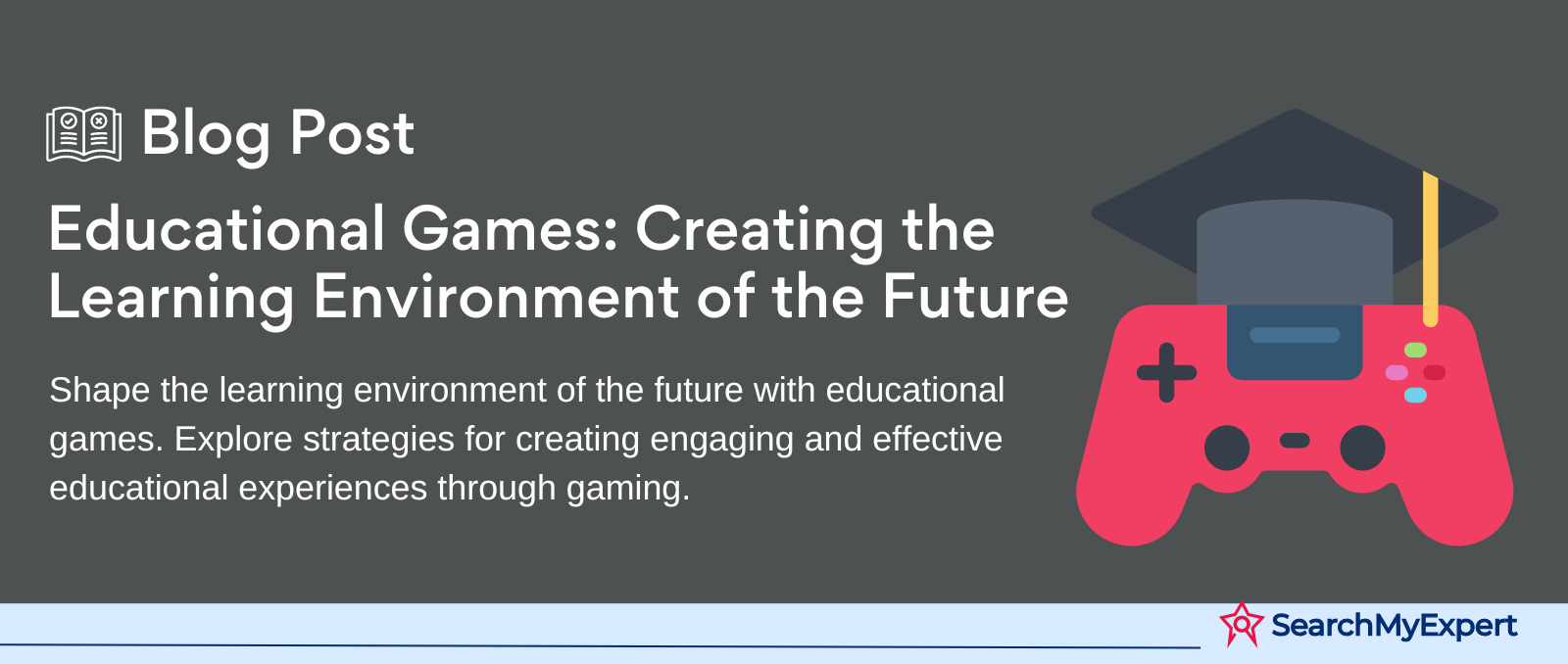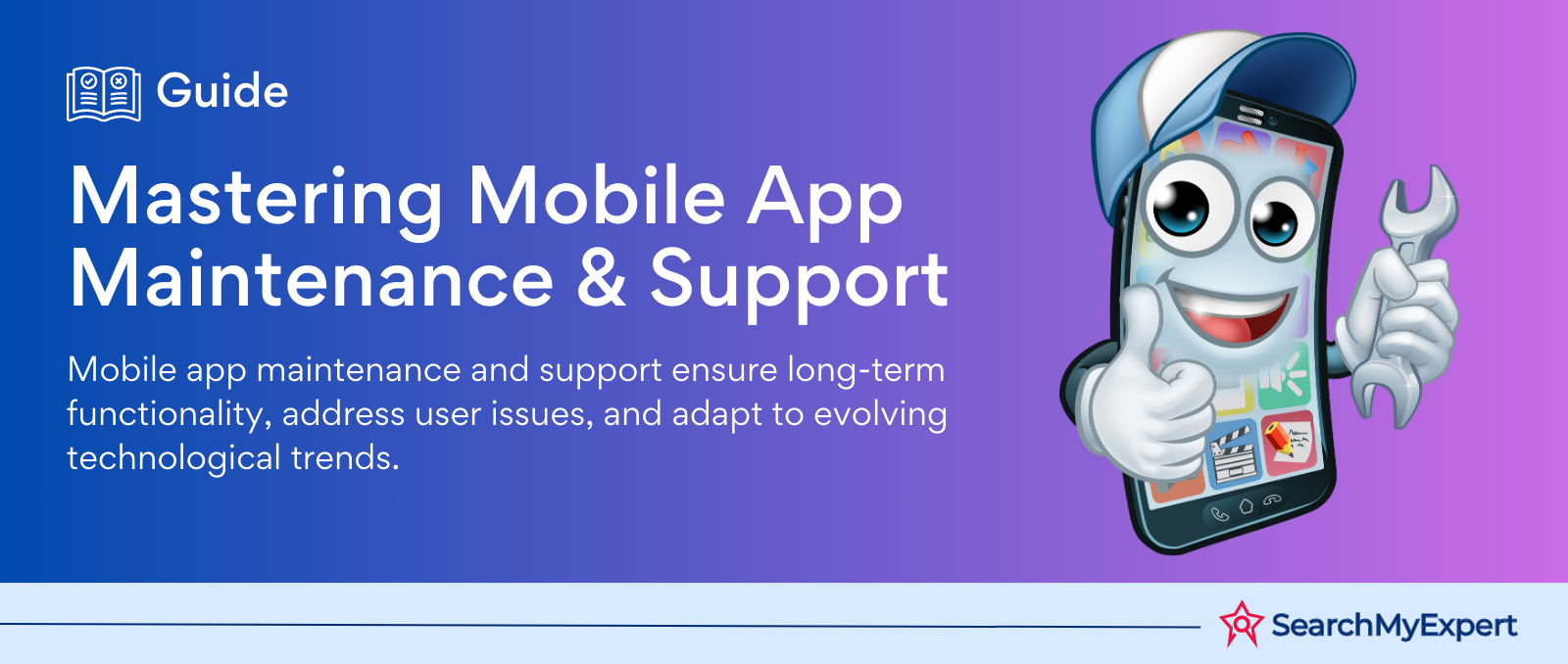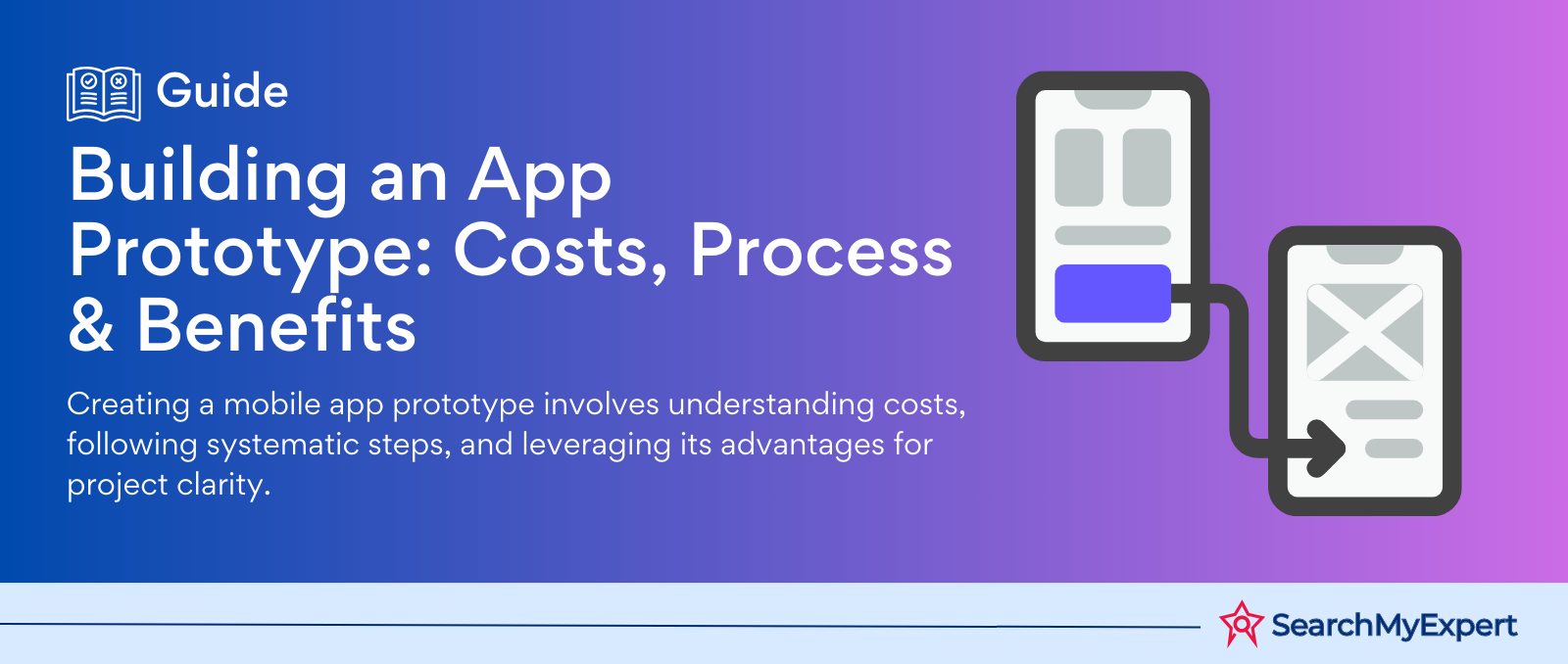Hey there, awesome visitor! 👋 Our website is currently undergoing some nifty upgrades to serve you even better. But don't worry, we'll be back before you can say "SearchMyExpert rocks!"

The Revolutionary Intersection of Gaming and Education: A New Era of Learning
Hook: Did you know that 75% of American households have at least one gamer? Imagine leveraging this immense interest in gaming for educational purposes!
Thesis: The fusion of game development and education heralds a transformative era in learning. By integrating the captivating elements of games with educational content, we unlock unparalleled potential for engaging, motivating, and educating students of all ages.
The Power of Games in Learning
Games are not just for entertainment anymore. They're powerful tools reshaping the educational landscape. When students play educational games, they are often so engrossed that they don't even realize they're learning. This seamless blend of fun and education is what makes game-based learning revolutionary.
Engagement and Motivation: The Heart of Learning
Games naturally stimulate engagement. Their interactive nature keeps students active and involved, making learning a dynamic experience. By introducing elements like points, levels, and rewards, educational games can significantly boost a student's intrinsic motivation. They're not just passively receiving information; they're actively participating in their learning journey.
Skill Development: Beyond the Classroom Walls
Games in education go beyond rote learning. They encourage critical thinking, problem-solving, and decision-making. In a game setting, students often have to strategize, make choices, and face the consequences of those choices, mirroring real-life situations. Collaboration is another key aspect. Many educational games require teamwork, teaching students the value of working together to achieve common goals.
Content Mastery: Learning Redefined
Imagine learning history by actually "participating" in historical events, or understanding physics by virtually experiencing the laws of motion. Educational games can make this possible. They provide an immersive environment where students can explore, experiment, and understand complex concepts in a tangible way. This hands-on approach reinforces key concepts, making learning not just effective but also enjoyable.
The Benefits of Educational Games: A Catalyst for Enhanced Learning
Unveiling the Multifaceted Advantages
Educational games are not just a novel way to learn; they are a powerful catalyst for enhanced learning experiences. Let's delve into how these games revolutionize learning by boosting engagement, fostering skill development, and aiding in content mastery.
Engagement and Motivation: Igniting the Spark of Learning
- Active Participation: Unlike traditional learning methods, games require active participation. This involvement keeps students engaged and invested in the learning process.
- Instant Feedback: Games provide immediate feedback, allowing students to understand their progress and areas for improvement. This instant response system keeps motivation levels high.
- Customizable Learning Paths: Many educational games offer the flexibility to tailor learning paths according to individual needs, making learning more relevant and engaging for each student.
Skill Development: Equipping Students for the Future
- Critical Thinking and Problem-Solving: Games often present complex problems that require thoughtful solutions. This nurtures critical thinking and problem-solving skills, essential for real-world challenges.
- Collaboration and Teamwork: Multiplayer educational games encourage collaboration. Students learn the value of teamwork, communication, and collective problem-solving.
- Digital Literacy: In today's tech-driven world, digital literacy is crucial. Educational games familiarize students with technology, making them proficient in navigating and utilizing digital tools.
Content Mastery: Making Learning Stick
- Immersive Learning Environments: Games create immersive environments where students can explore topics in-depth. This hands-on approach aids in better understanding and retention of concepts.
- Cross-Curricular Learning: Many educational games integrate various subjects, providing a holistic learning experience that connects different areas of knowledge.
- Fun Factor: Let's not forget the fun element. When learning is fun, it sticks. Games make difficult concepts more approachable and enjoyable, leading to effective learning.
Exploring the Diverse World of Educational Games
Types of Educational Games: Adapting Play for Learning
The realm of educational games is vast, encompassing various genres, each with unique characteristics that cater to different learning styles and objectives. Let's explore these genres and their educational applications.
Genre Exploration: A Spectrum of Learning Opportunities
- Simulations: These games replicate real-world processes, making them ideal for subjects like science, economics, and history. For example, a simulation game about managing a city teaches economics and civics.
- Quizzes and Trivia: Perfect for reinforcing knowledge, quiz games are excellent for subjects like language, history, and science. They provide a fun way to test and solidify learning.
- Adventure Games: These narrative-driven games are great for language learning, history, and even science. By immersing players in a story, they encourage exploration and problem-solving.
- AR/VR Games: Augmented and Virtual Reality games offer immersive experiences. Imagine learning about the solar system by virtually traveling through space or understanding human anatomy through a 3D interactive model.
Target Audience: Customizing Games for Varied Learners
- Age-Appropriate Content: Games for younger children often focus on basic skills and knowledge, using bright colors and simple gameplay. For older students, games can tackle more complex subjects and involve sophisticated mechanics.
- Learning Levels: Educational games should align with the learner’s proficiency. For beginners, games might focus on basic concepts, while advanced learners can engage with games that challenge their critical thinking and problem-solving skills.
Mechanics and Dynamics: Designing for Educational Outcomes
- Game Mechanics: These are the rules and procedures that drive gameplay. In educational games, mechanics should be aligned with learning objectives. For instance, a game designed to improve vocabulary might involve mechanics where players collect words to build sentences.
- Game Dynamics: This refers to how players interact with the game and each other. Cooperative dynamics encourage teamwork and communication, while competitive dynamics can motivate students to excel.
Crafting Educational Games - The Development Process
The Game Development Process for Education: A Strategic Approach
Developing educational games is a meticulous process that combines pedagogy and technology. Let's dissect this process to understand how effective educational games are brought to life.
Identifying Learning Objectives: The Foundation of Game Development
- Goal-Oriented Design: Every educational game starts with a clear learning objective. Whether it's teaching a language, explaining scientific concepts, or fostering historical understanding, the game's design revolves around these goals.
- Alignment with Curriculum: The learning objectives should align with the educational curriculum, ensuring that the game complements formal education rather than replacing or contradicting it.
- Measurable Outcomes: The objectives must be measurable. This means that the game should have built-in mechanisms to assess whether the players are meeting the intended learning outcomes.
Team Composition: Collaborative Synergy in Development
- Educators: Their insights are crucial in aligning the game with educational standards and learning objectives. They ensure that the content is accurate, relevant, and age-appropriate.
- Game Developers: They bring technical expertise, transforming educational concepts into engaging gameplay.
- Artists and Writers: Artists create the visual appeal, while writers develop the narrative. Both play a vital role in making the game immersive and relatable.
- Sound Engineers and Animators: They add the finishing touches that make games captivating, enhancing the overall learning experience.
Development Platforms and Tools: Technology at the Helm
- Game Engines: Platforms like Unity and Unreal Engine are popular choices for game development. They offer robust tools for creating complex, interactive environments.
- Educational Software Tools: Tools like Scratch or GameSalad are designed specifically for educational purposes, offering simpler interfaces for creating basic games.
- AR/VR Development Kits: With the rise of immersive learning, AR and VR kits have become essential in creating interactive 3D environments for educational purposes.
Illuminating Success in Game-Based Learning
Case Studies: Real-Life Examples and Triumphs in Educational Gaming
This final step in our journey explores successful educational games, presenting evidence of their impact and sharing perspectives from those at the heart of this revolution.
Showcase: Triumphs in Educational Gaming
- Math Blaster - This classic game has been around since the 1980s, teaching generations of students math skills. Studies show significant improvement in mathematical abilities among children who regularly play "Math Blaster."
- Minecraft: Education Edition - A game that transcends traditional subject boundaries. It's been used to teach history by recreating historical sites, science through ecosystem simulations, and even programming with its Redstone circuitry.
- Duolingo - A language learning app that gamifies the process of learning a new language. Users have reported increased motivation and improved language skills, with studies backing these claims.
Evidence and Data: The Proof Is in the Pudding
- Statistical Improvements: Research shows that students who engage with educational games show higher test scores in subjects like math, science, and languages compared to those who don’t.
- Enhanced Cognitive Abilities: Studies have found improvements in areas like memory, attention span, and problem-solving skills among students who regularly play educational games.
Teacher and Student Perspectives: Voices from the Field
- Teacher Testimonials: Many educators praise educational games for their ability to engage reluctant learners. A teacher from Ohio shared, "Games like 'Prodigy' have transformed how my students view math. They're excited, engaged, and more confident."
- Student Feedback: Students often express that educational games make learning more enjoyable. A high school student said, "Learning through games like 'Civilization' makes history feel alive. It’s way more engaging than just reading a textbook."
Navigating the Hurdles in Educational Game Development
Challenges and Considerations in Crafting Educational Games
In this final step, we delve into the challenges and key considerations of developing educational games, exploring the complexities that go beyond the game's fun exterior.
Cost and Resources: Balancing Budget and Quality
- Financial Constraints: Developing high-quality educational games can be costly. Budget constraints can affect the quality, scope, and accessibility of the games.
- Resource Allocation: Balancing funds between game development, testing, and distribution poses a significant challenge. This often requires creative solutions and strategic partnerships.
Assessment and Evaluation: Measuring Impact
- Evaluating Learning Outcomes: Determining the effectiveness of educational games in achieving learning goals is crucial. This involves developing metrics and tools for assessment.
- Continuous Improvement: Based on evaluation, games may need updates and modifications, which require ongoing investment and development efforts.
Ethical Considerations: Navigating the Complex Landscape
- Game Addiction: Ensuring that educational games are engaging but not addictive is a delicate balance. It's essential to design games that promote healthy usage patterns.
- Data Privacy: Many educational games collect user data for customization and improvement. Safeguarding this data and ensuring privacy is paramount.
- Representation and Inclusivity: Games must be inclusive and representative of diverse cultures, abilities, and backgrounds. This ensures that all students can relate to and benefit from the games.
The Horizon of Educational Gaming
Future Outlook: Embracing the Potential
Let’s reiterate the remarkable potential of educational games and look toward the future, envisioning the continued evolution of this dynamic field.
Reiterating the Importance: The Power of Educational Games
Educational games have proven their worth as potent tools for learning. They engage, motivate, and educate, transforming traditional education paradigms. The benefits span across improved engagement, skill development, and content mastery, making learning not only effective but also enjoyable.
Call to Action: Embracing Educational Games
- For Educators: Incorporate educational games into your curriculum. They can supplement traditional teaching methods and cater to different learning styles.
- For Developers: Continue innovating and pushing the boundaries of what educational games can achieve. Collaborate with educators to ensure the games are both engaging and educational.
- For Parents and Students: Explore and embrace educational games as a supplement to traditional learning. They offer a fun and effective way to reinforce learning outside the classroom.
Future Trends: The Evolving Landscape of Educational Gaming
- Technological Advancements: Expect to see more AR and VR educational games, offering immersive and interactive learning experiences.
- Personalization: AI and machine learning will enable more personalized learning experiences through games, adapting to individual learning styles and pace.
- Global Reach: With the increasing accessibility of technology, educational games will reach a wider audience, potentially bridging educational gaps in underserved communities.
Conclusion
The journey through the landscape of educational gaming has revealed its profound impact and immense potential. From enhancing engagement and motivation to fostering critical skills and simplifying complex subjects, educational games have shown they are more than mere playthings. They are potent tools for learning, innovation, and inspiration.
The diverse genres of educational games cater to various learning styles and ages, ensuring that everyone, from young children to adults, can benefit from this interactive form of learning. The development process, although fraught with challenges, is a testament to the collaborative effort between educators, developers, and creatives, striving to make learning both effective and enjoyable.
Looking ahead, the future of educational gaming is bright and promising. Advancements in technology, such as AR and VR, are set to take educational experiences to new heights, offering even more immersive and personalized learning journeys. The potential for these games to bridge educational gaps globally is immense, heralding a new era where learning can be universally accessible and engaging.
This exploration serves as a call to action for educators, developers, parents, and students to embrace educational games. By doing so, we can unlock a world of possibilities where learning is not just a task but an adventure that excites, engages, and enlightens.
Elevate your gaming experience with our Game Development Services
Other Related Blogs


Mastering Docker for App Development: A Comprehensive Guide to Benefits, Use-Cases, and Alternatives

STAY UP TO DATE
GET PATH'S LATEST
Receive bi-weekly updates from the SME, and get a heads up on upcoming events.
Contact Us
We will get back to you as soon as possible.
Please try again later.


Find The Right Agencies
SearchMyExpert is a B2B Marketplace for finding agencies. We help you to describe your needs, meet verified agencies, and hire the best one.
Get In Touch
WZ-113, 1st Floor, Opp. Metro Pillar No- 483, Subhash Nagar - New Delhi 110018
About Us
For Agencies
Benefits Of Listing With Us
Submit An Agency
Agency Selection Criteria
Sponsorship
For Businesses
Agencies Categories
Trends Articles
FAQs
Find The Right Agencies
SearchMyExpert is a B2B Marketplace for finding agencies. We help you to describe your needs, meet verified agencies, and hire the best one.
About Us
For Agencies
List Your Agency
Benefits Of Listing
Agency Selection Criteria
Sponsorship
Get In Touch
WZ-113, 1st Floor, Opp. Metro Pillar No- 483, Subhash Nagar - New Delhi 110018
contact@searchmyexpert.com
Copyright © 2023 · Skillpod Private Limited · All Rights Reserved - Terms of Use - Privacy Policy







